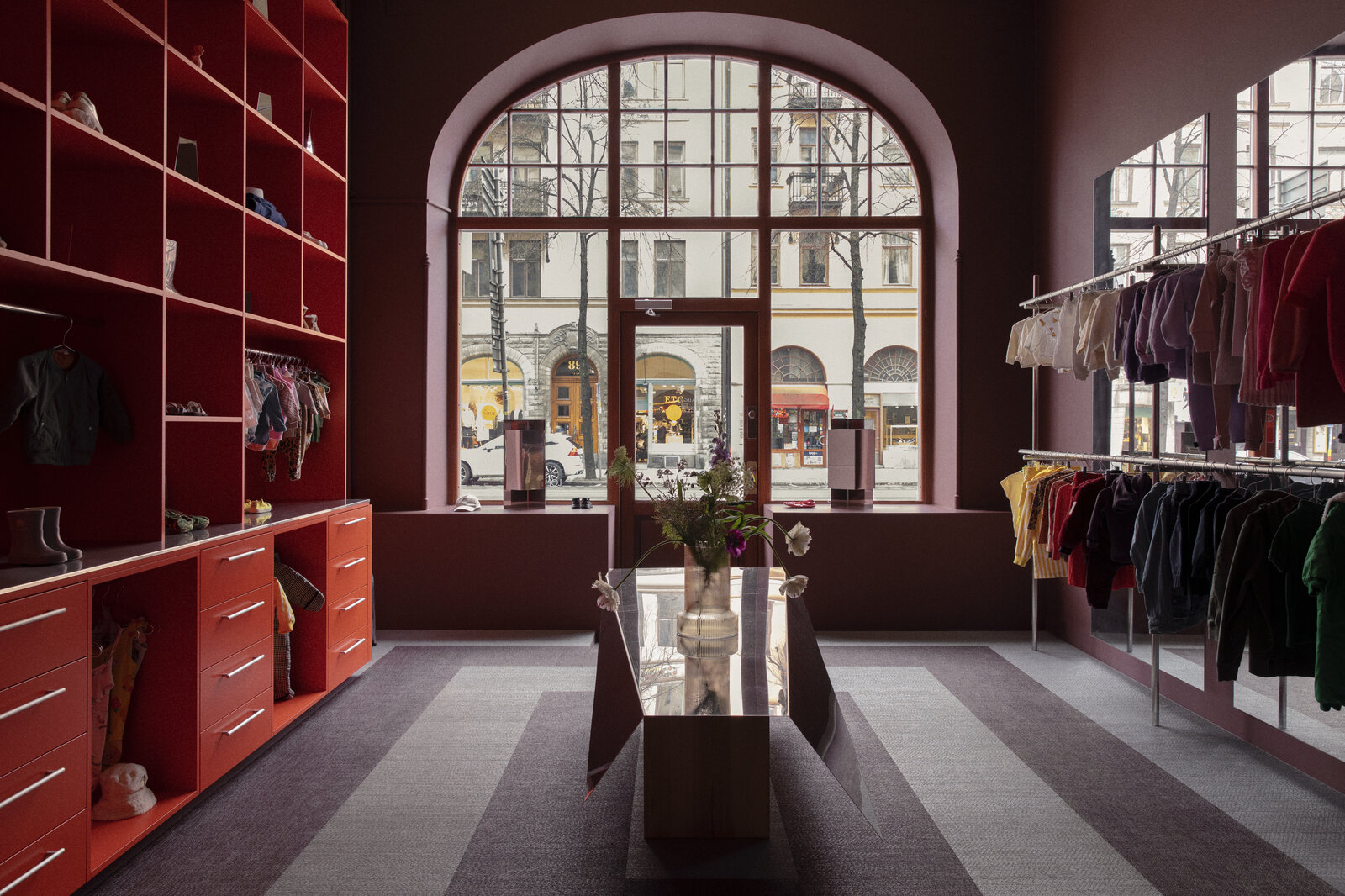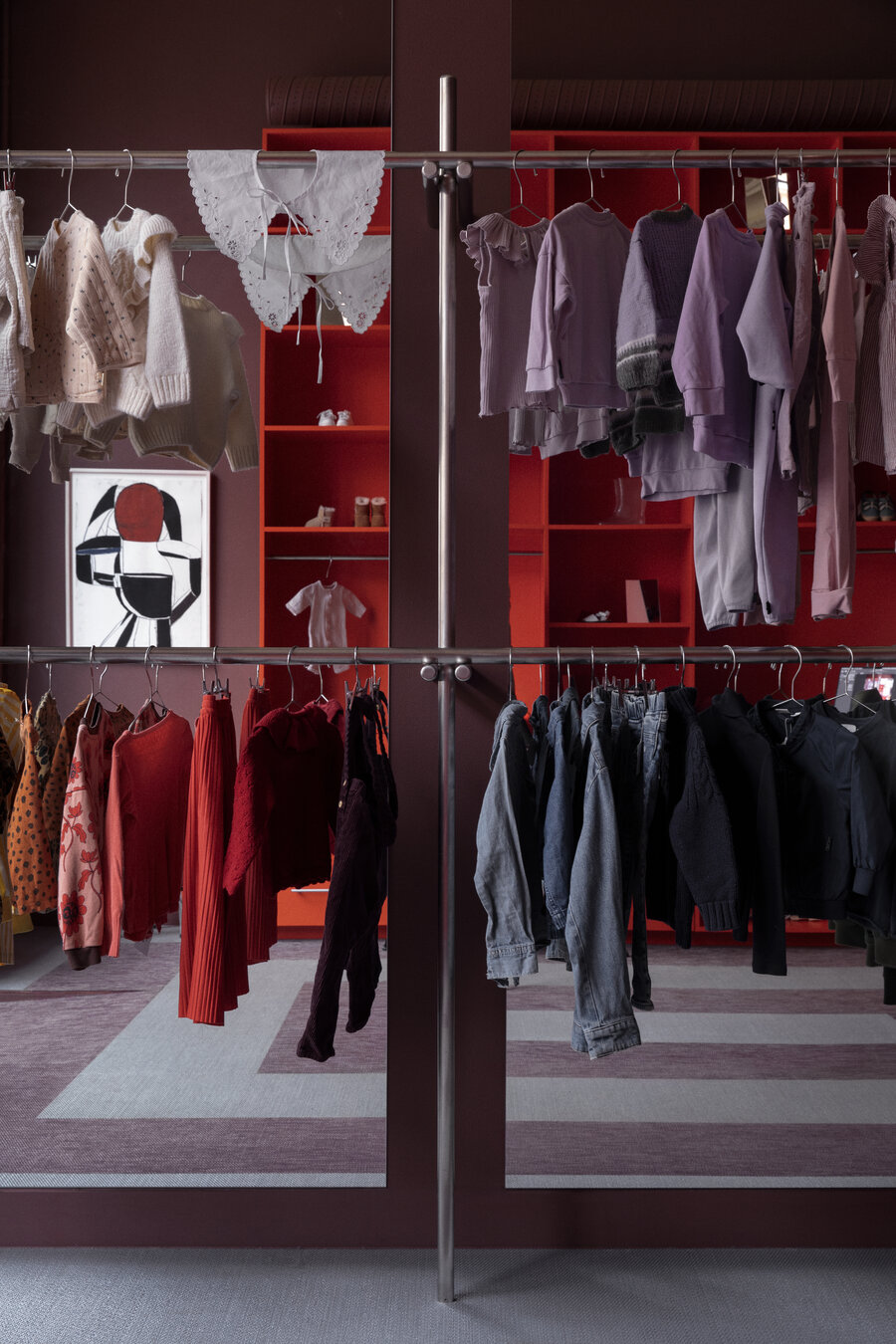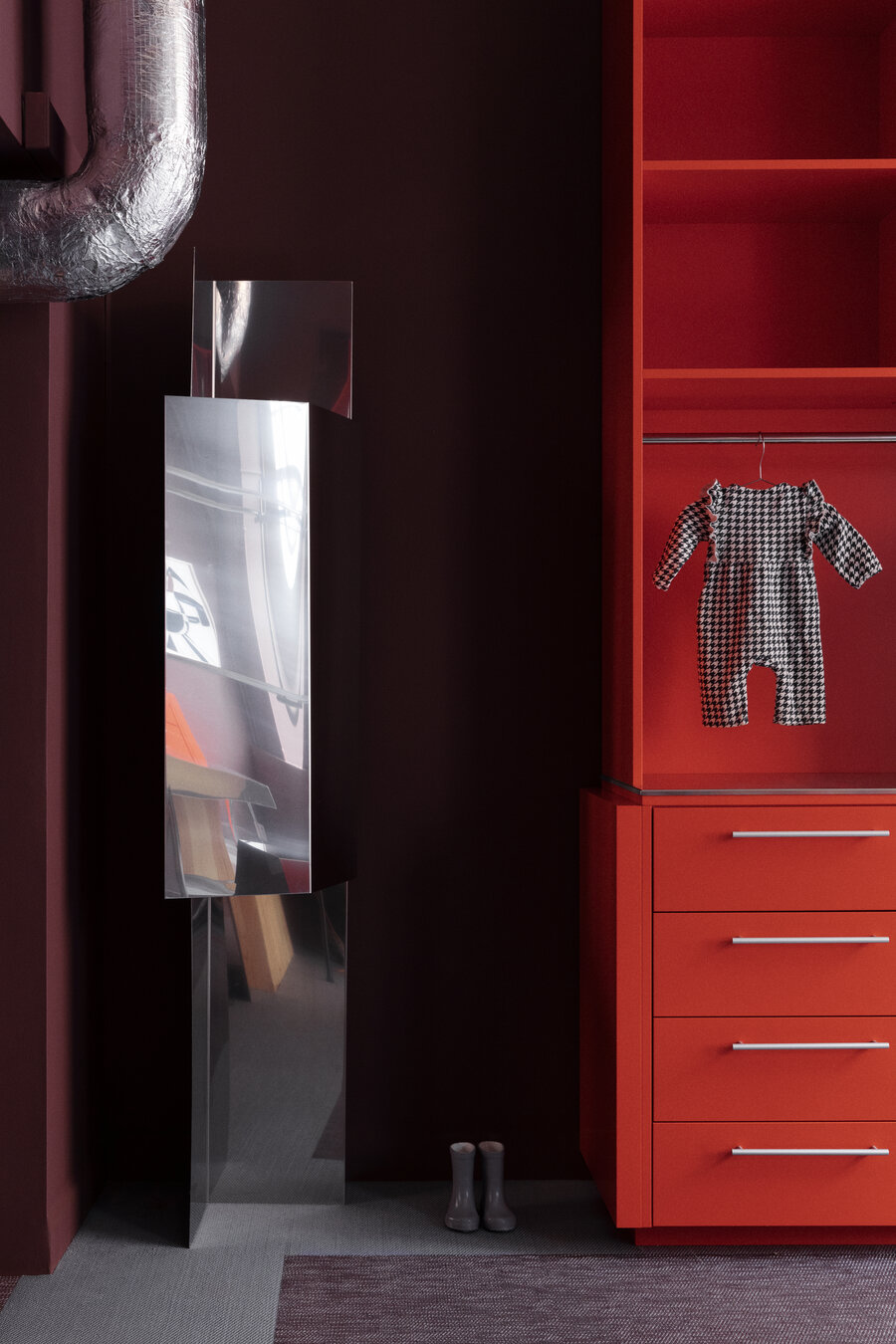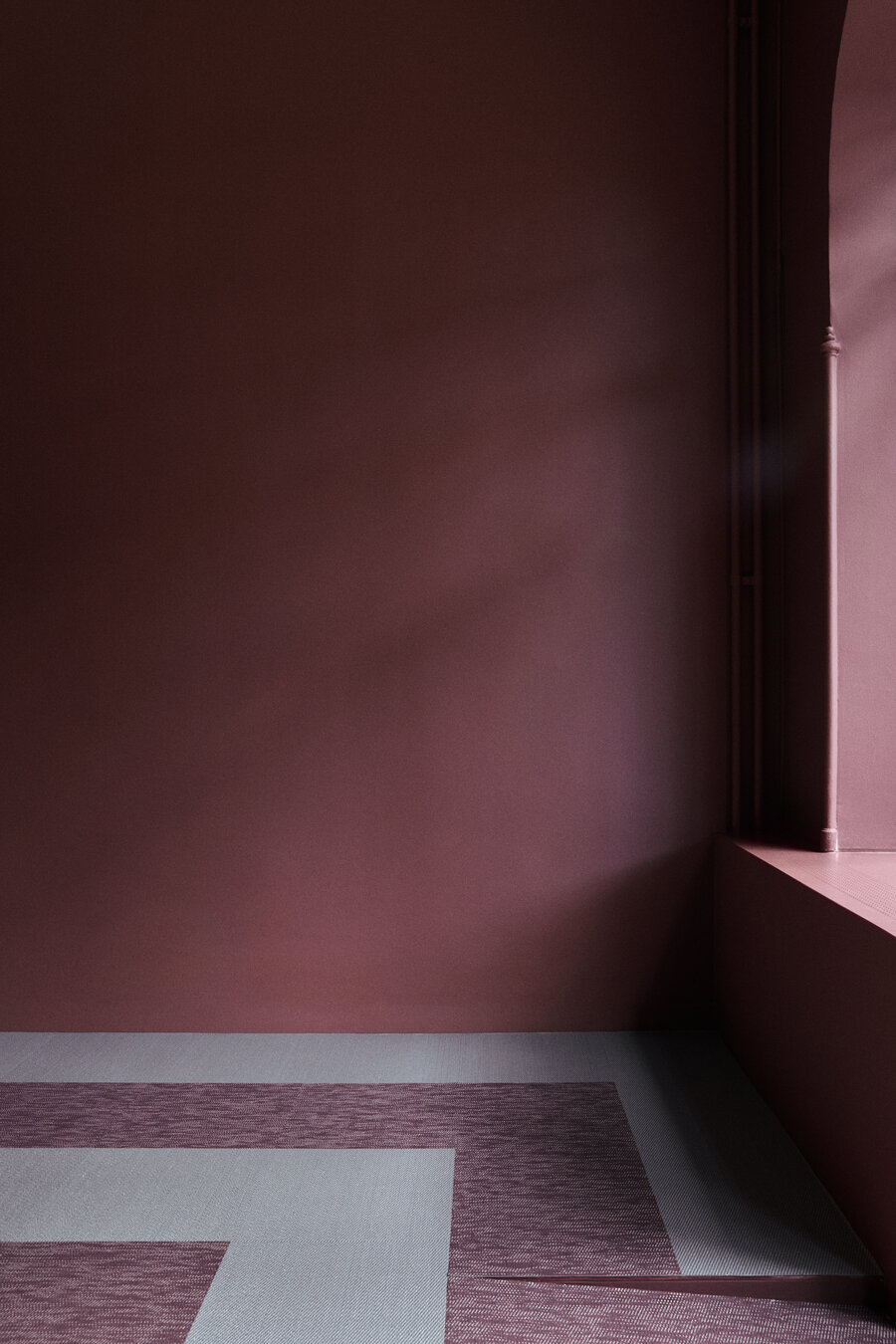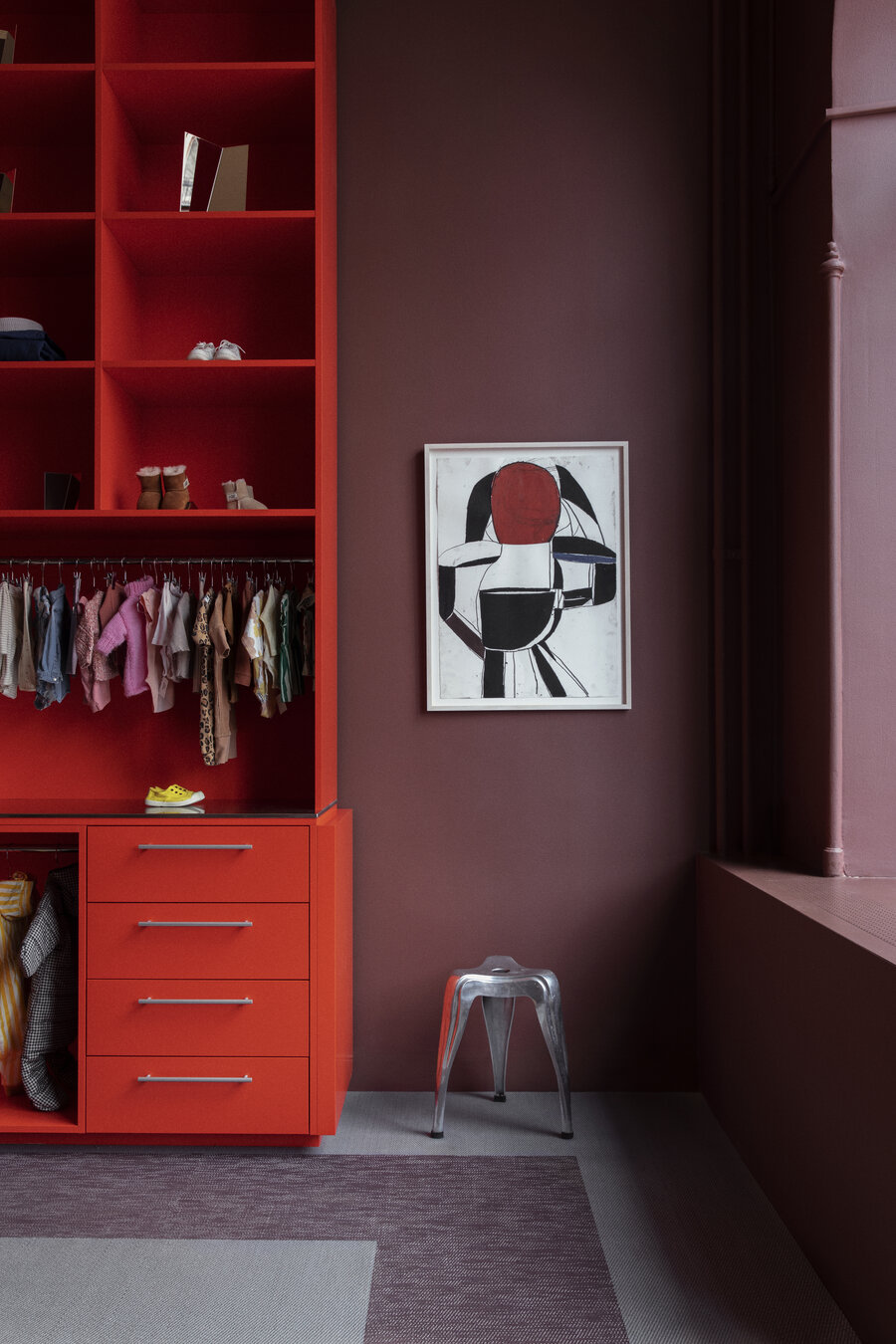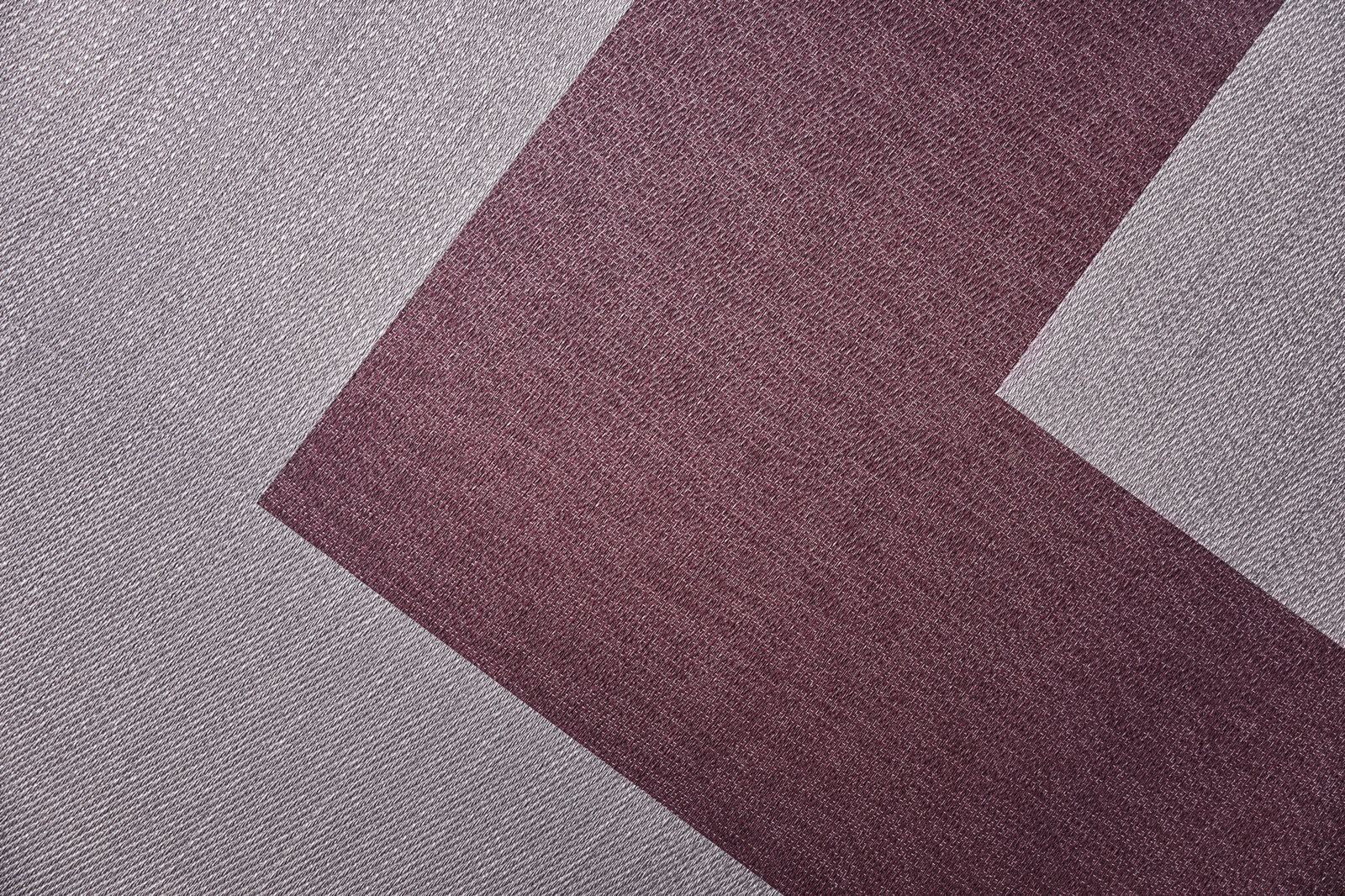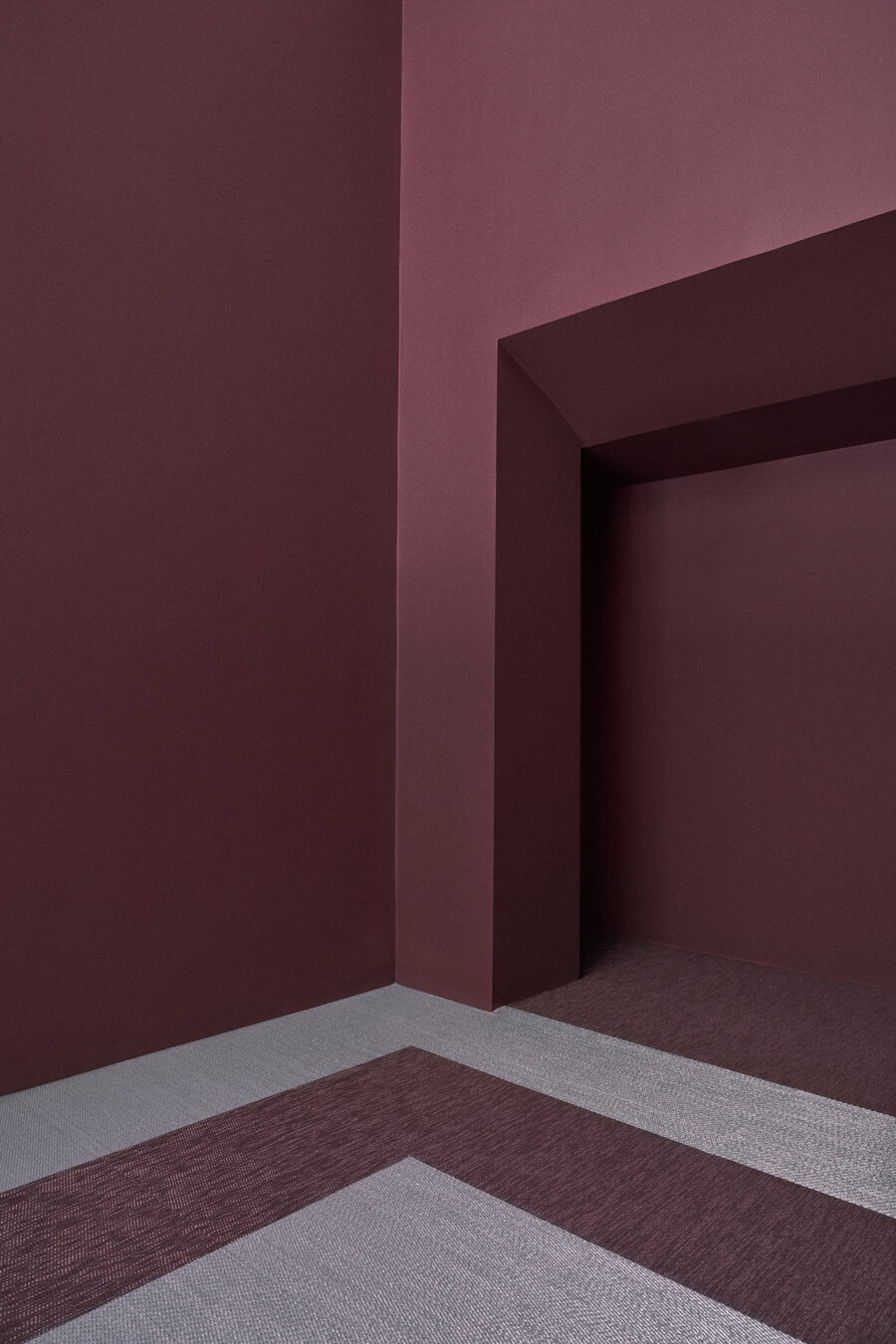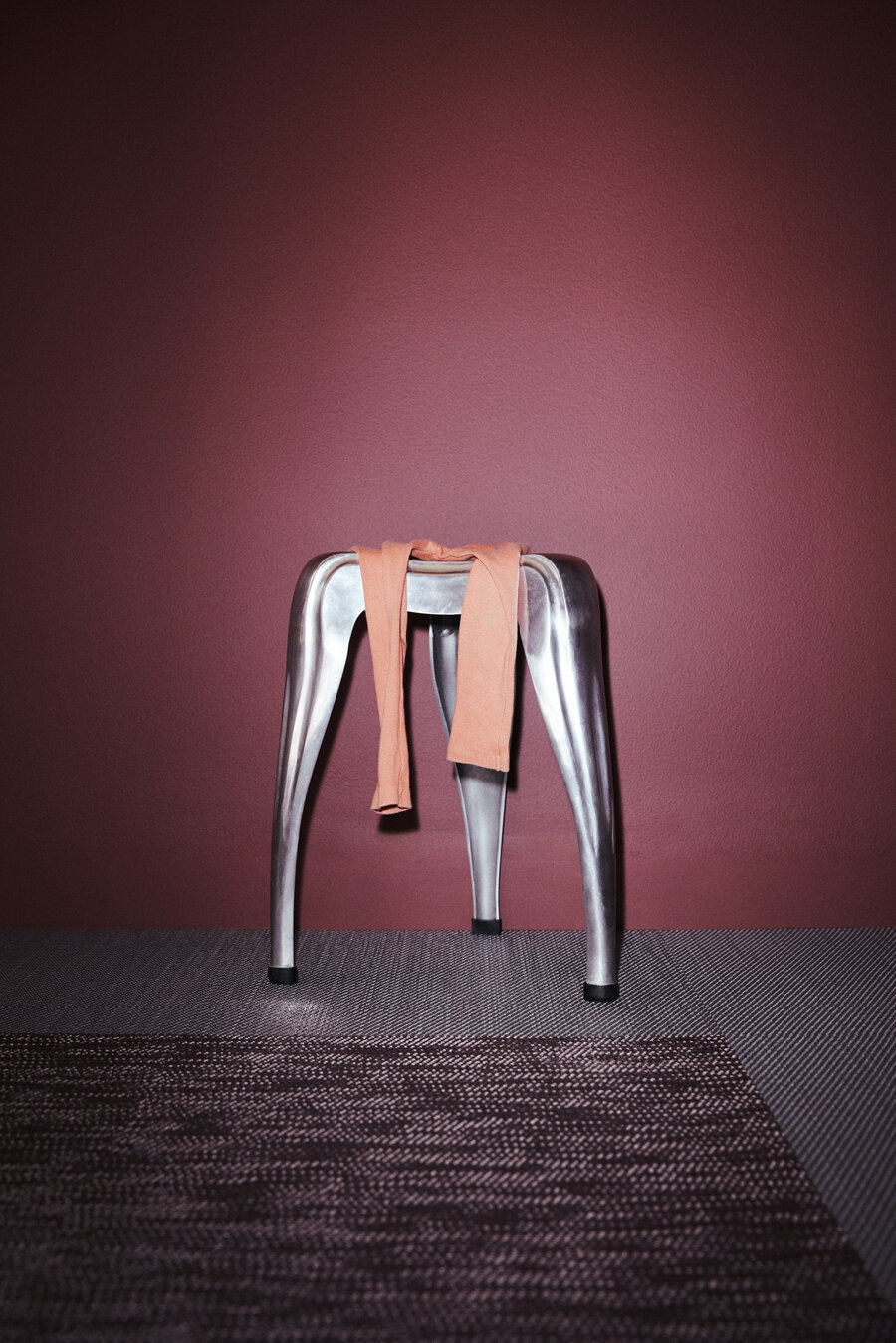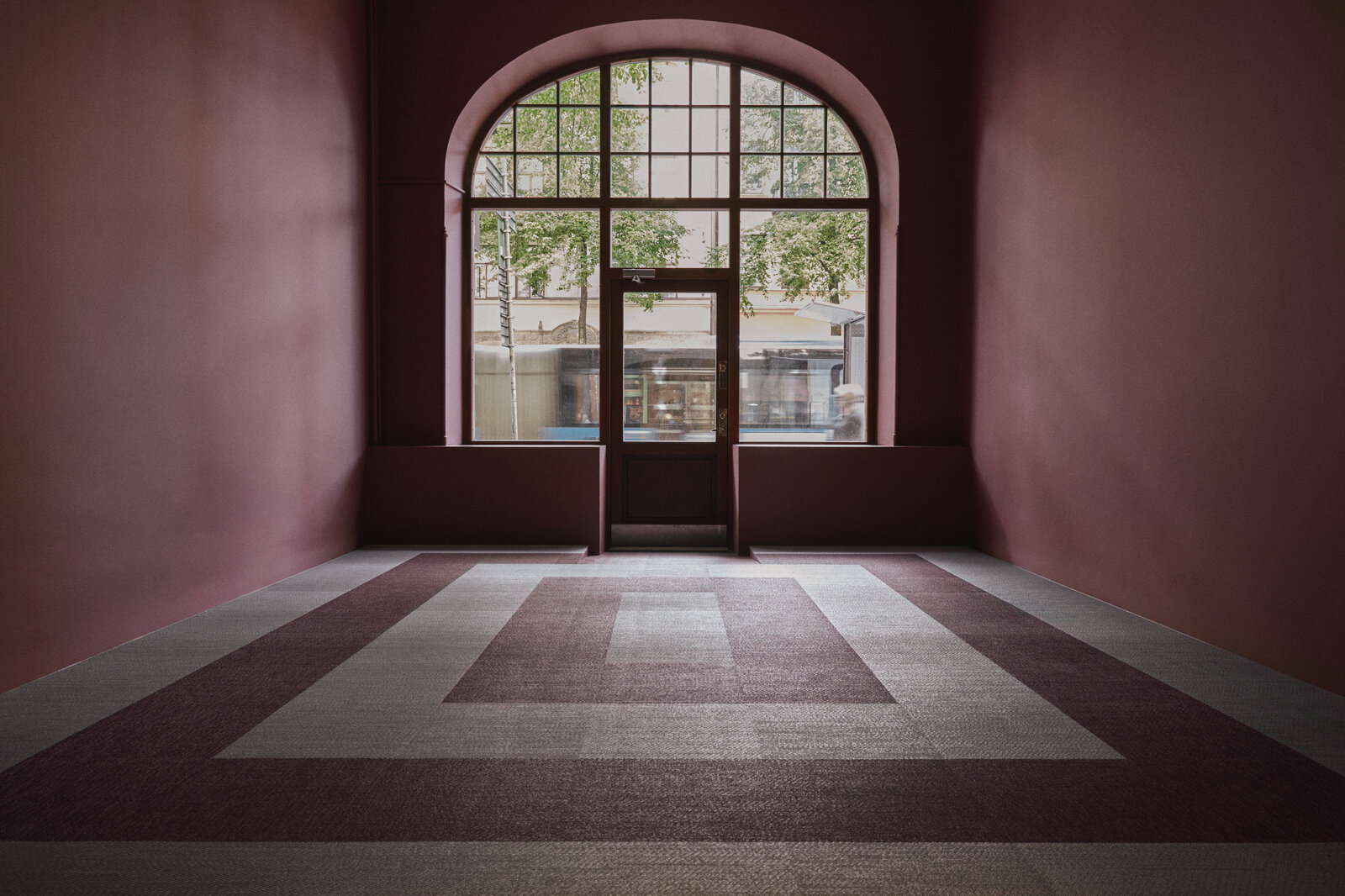How did you come in contact with Bolon, and what made you choose our flooring?
As an interior designer, Lisa has worked with Bolon in previous professional projects and knew how its quality and identity truly enhance spaces. The fact that the carpets are woven with recycled materials is also a nod to the textile and second-hand industry, making the decision a no-brainer. Furthermore, Bolon balances between interior design and fashion in an intriguing and inspiring way that we can easily identify with.
We knew we wanted a store with a strong visual identity, using a color that sticks to your brain, paired with details in metal. Both of us love silver and metal – Hannah is a silversmith, and Lisa designs various metal objects in her artistic projects. When we discovered Now Silver at the furniture fair last spring, it quickly became a crucial piece in the creative puzzle. To find a perfect match with the silver plate, Botanic Chestnut entered the scene just as we nailed down the wall color. We aimed for the walls and floors to meld together, creating a warm and serene contrast to the more robust and edgier Now Silver, ensuring the experience of all the different garments wouldn't be too chaotic. The store features fantastic windows and high ceilings, but the floor area is relatively small. To maximize impact, the floor pattern evolved, adding an extra dimension to the space.

